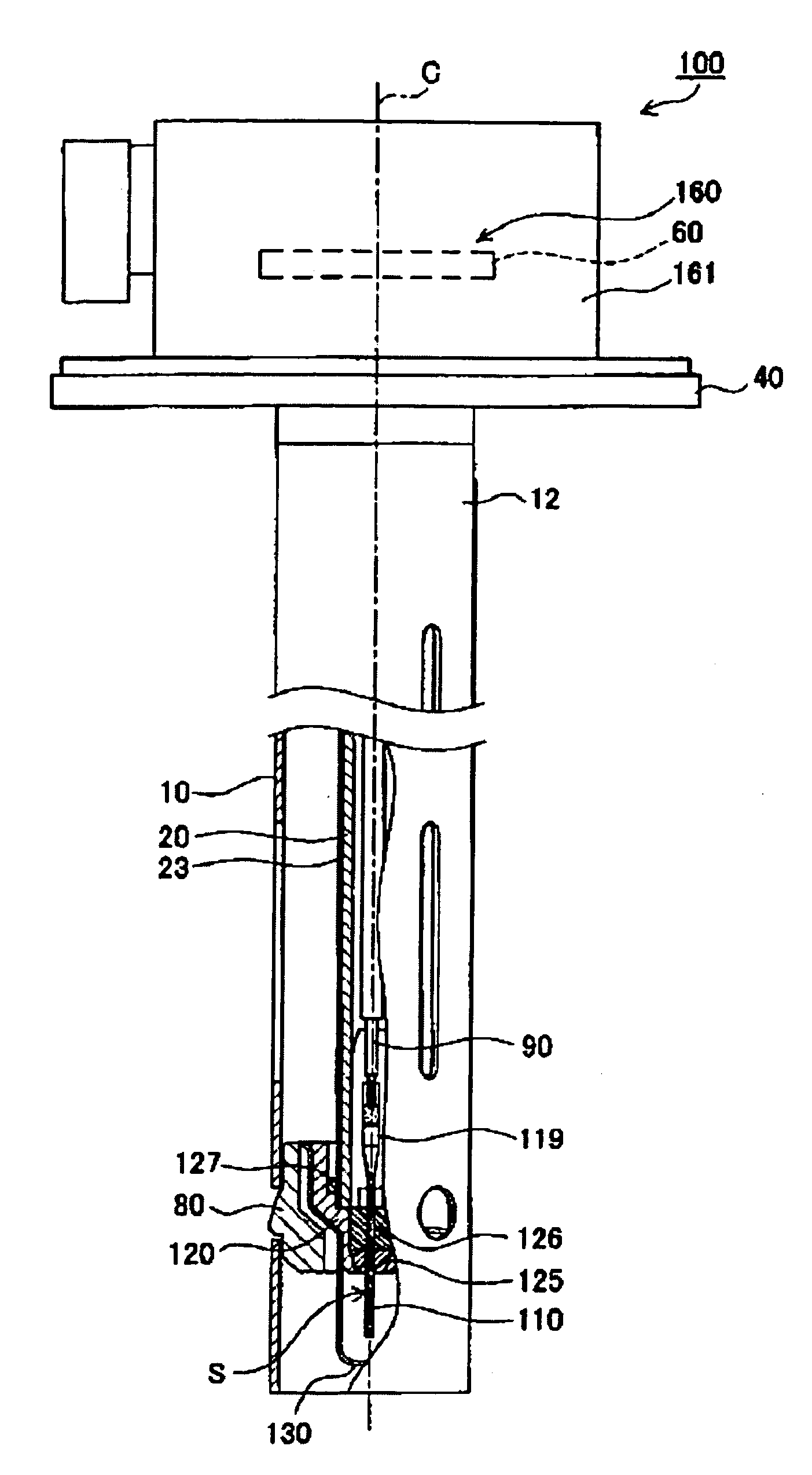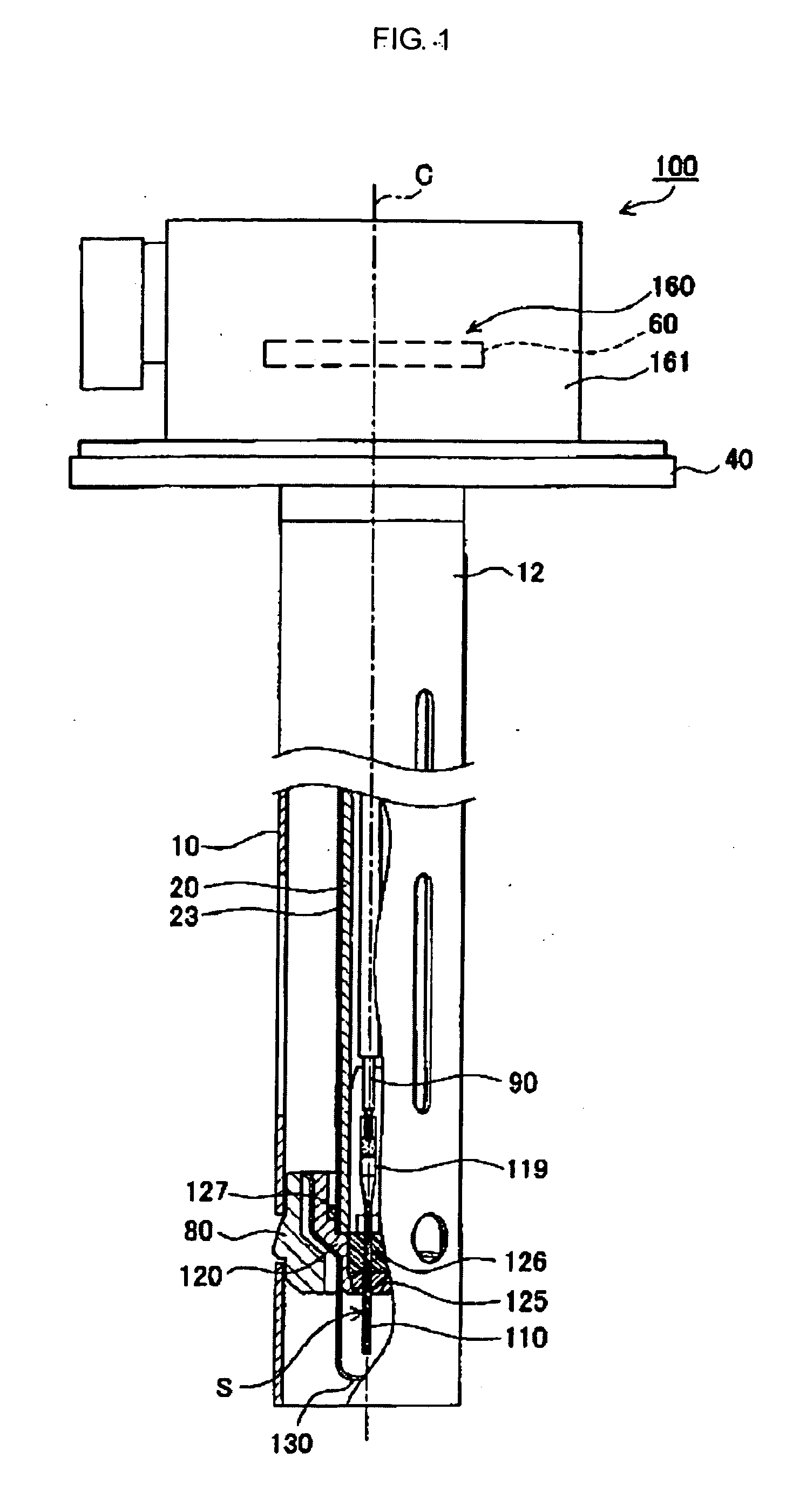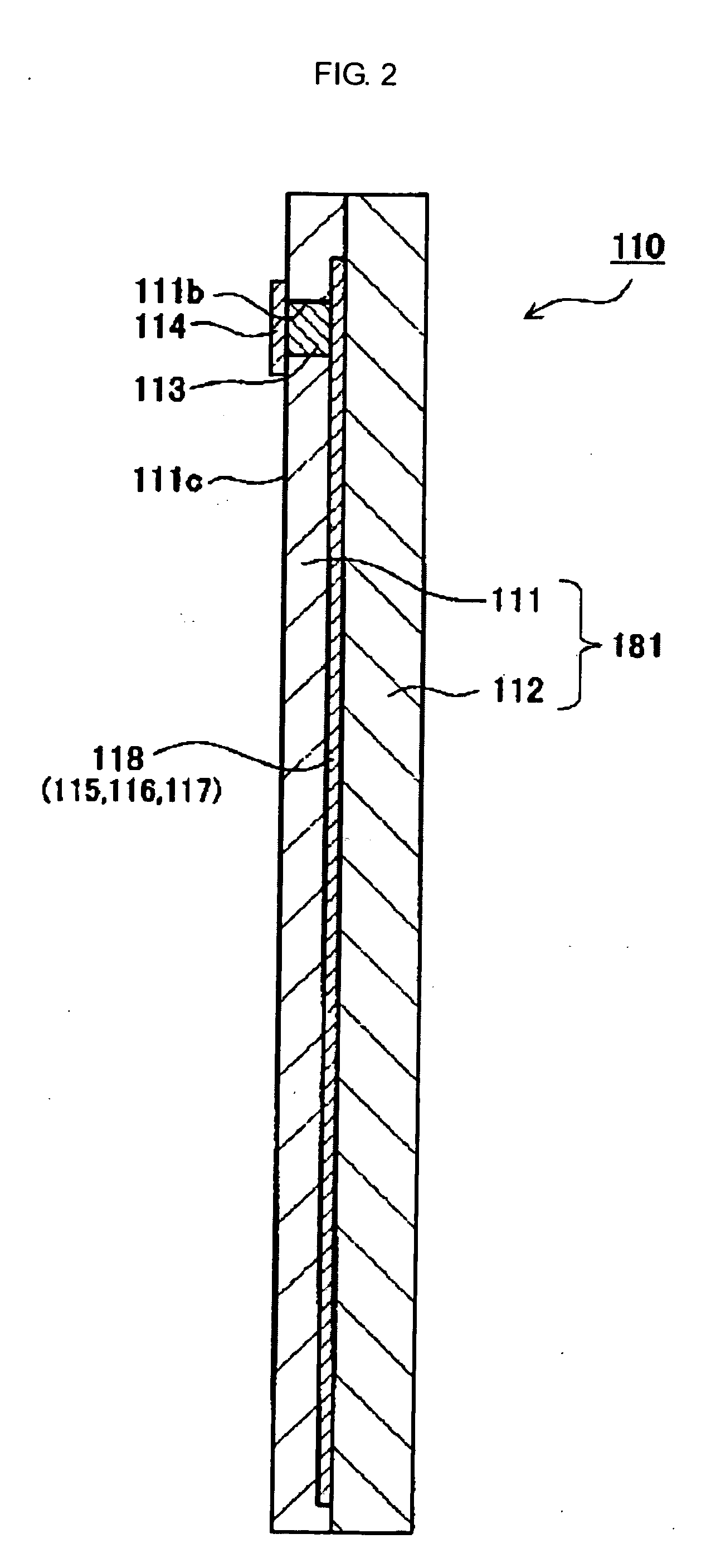Liquid-condition detection element and detection sensor
- Summary
- Abstract
- Description
- Claims
- Application Information
AI Technical Summary
Benefits of technology
Problems solved by technology
Method used
Image
Examples
Embodiment Construction
[0055] An embodiment of the present invention will be described with reference to the drawings. FIG. 1 is a partial cross-sectional view of a liquid-condition detection sensor 100 according to one preferred embodiment of the present invention. As shown in FIG. 1, the liquid-condition detection sensor 100 includes a liquid-condition detection element 110, an outer, tubular electrode 10, an inner, tubular electrode 20, a detection section 160, and a mounting section 40. In the liquid-condition detection sensor 100, as viewed along a longitudinal axis C, the side facing toward the liquid-condition detection element 110 is a front end side, and the side facing toward the detection section 160 is a rear end side. As shown in FIG. 4, in the liquid-condition detection sensor 100 of this embodiment, a front end portion thereof is immersed in a urea aqueous solution L contained in an aqueous-urea tank 98, whereby the condition of the urea aqueous solution L can be detected.
[0056] The mounti...
PUM
 Login to View More
Login to View More Abstract
Description
Claims
Application Information
 Login to View More
Login to View More - R&D
- Intellectual Property
- Life Sciences
- Materials
- Tech Scout
- Unparalleled Data Quality
- Higher Quality Content
- 60% Fewer Hallucinations
Browse by: Latest US Patents, China's latest patents, Technical Efficacy Thesaurus, Application Domain, Technology Topic, Popular Technical Reports.
© 2025 PatSnap. All rights reserved.Legal|Privacy policy|Modern Slavery Act Transparency Statement|Sitemap|About US| Contact US: help@patsnap.com



